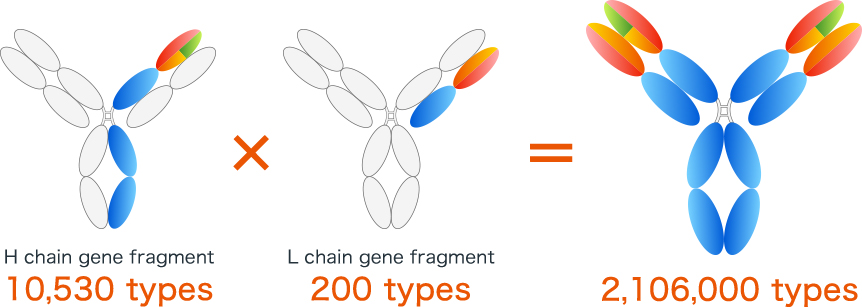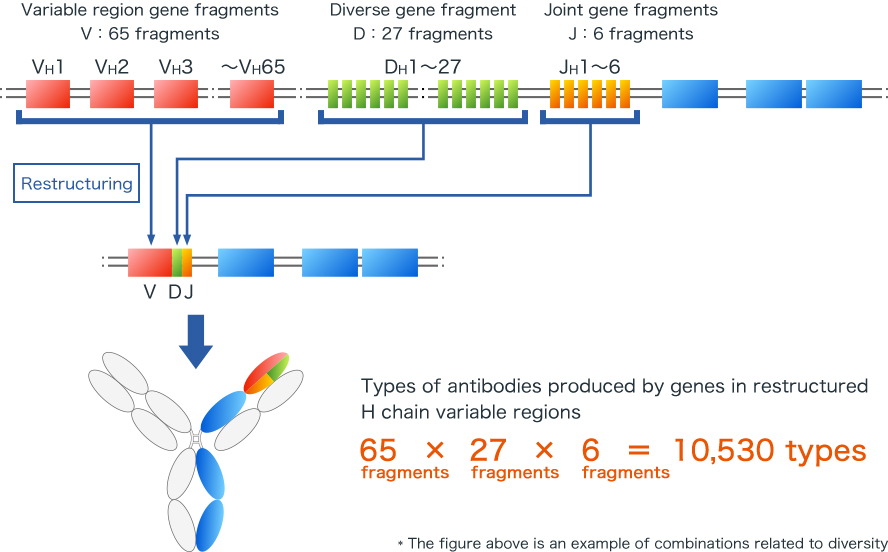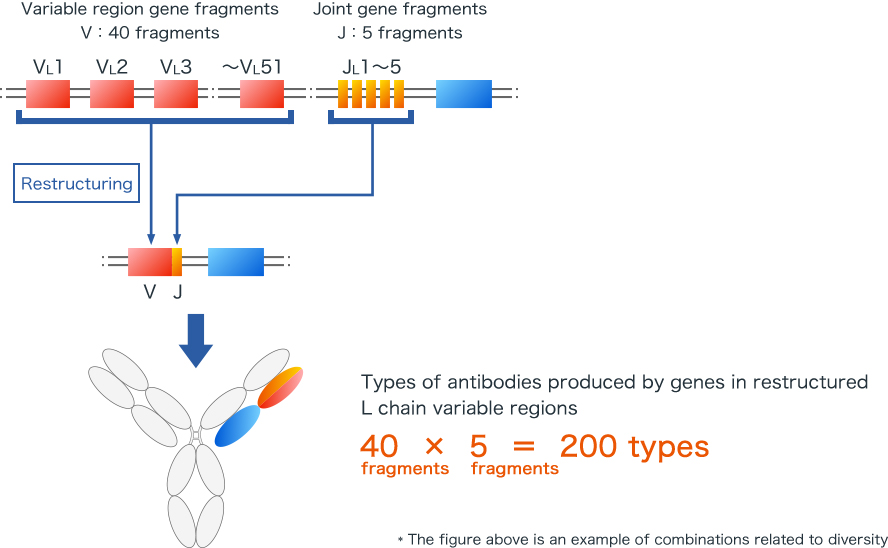Diversity of antibodies
Producing a wide variety of antibodies to respond to a variety of antigens
Our body responds to various pathogens such as bacteria and viruses, producing a wide variety of antibodies that can bind to specific antigens. This is called the “diversity” of an antibody.
The diversity of antibodies is created by the combination of variable regions of H chains and L chains.
It is reported that there are 10,530 types of H-chains and 200 types of L-chains, which make as many as 2,106,000 different types. Furthermore, because there are other mechanisms for producing diversity such as mutations, it is possible to produce antibodies that can bind to virtually any antigen.

Recombining genes of the variable region to produce a variety of antibodies
The diversity of antibodies is determined by a mechanism called gene restructuring.
The genes in the heavy chain variable region of an antibody are divided into VH gene regions, DH gene regions, and JH gene regions. Also, the gene in the light chain variable region of antibodies is divided into the VL gene region and JL gene region. These gene regions are assembled by selecting one type from multiple gene fragments.
In this way, a variety of antibodies are assembled by gene fragments from the heavy chain variable region and the light chain variable region.


